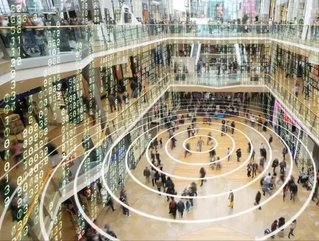Demand forecasting – How it drives value for retailers

Many modern retailers have spent vast amounts of time perfecting their approach to planning and the tools to deliver it, but if they are working with flawed data and employing inaccurate forecasting techniques, they are likely to find these solutions are of little value.
In today’s turbulent retail market, being able to predict and forecast accurately has never been more valuable, as it enables retailers to staff and stock efficiently and effectively. However, with traditional forecasting methods often displaying significant error rates, many retailers are being left with too few staff on the shop floor and in the warehouse, and insufficient stock in place to meet sudden upticks in demand. Typically, this results in an unfortunate mix of abandoned shopping baskets, unfulfilled sales opportunities and increased costs.
Too many retailers have historically based their planning efforts on inaccurate forecast data. That’s why we are seeing a growing trend for retailers to start looking at artificial intelligence and machine learning, to improve their ability to accurately forecast demand. With computing and data processing power increasing in functionality all the time, the smarter retailers are already dipping their toes in the water and gauging the benefits that more accurate forecasting could potentially have on their sales figures and profitability.
See also:
Data Analysis
Key to the success of any forecasting system is the type of data fed into it. At a base level, this will be historical data. From the retailer’s perspective that could be as simple as recording the footfall coming into the shop on a quarter-hourly, half-hourly, or hourly basis as a baseline indicator of demand level along with sales data.
The latest demand forecasting solutions look to categorise this kind of activity against the day of the year so business can use machine learning to start to look for patterns in that data. Is it a weekday, weekend, bank holiday, a Friday or a Saturday after pay day for instance? Time slots can also be overlaid, as can historical weather patterns.
All of these previous metrics can be employed to predict likely future demand but projected future events can also be brought in to further influence retail plans. These could be long-range weather forecasts, national or global events, or local dates of interest, like the town’s annual summer fair. The model, supplemented by consultancy from expert data scientists, can help retailers expect what would otherwise be the unexpected, and plan much more efficiently and effectively for likely future demand.
When used in conjunction with a labour modelling tool, the benefit could be that the retailer can save money by reducing staff levels when demand is likely to be low, but still more likely capitalize on opportunities to drive sales by bringing in staff where demand is expected to be high.
Demand forecasting also positively impacts the retail supply chain and associated logistics. Supply chains have become more agile in nature in recent years, and being able to forecast future demand enables retailers to drive a still faster response from them. On the product side, forecasting looks at different categories, highlighting how demand for each could change over time, or what specific product lines are working well in each category. Again, it is only worthwhile if the forecast is accurate.
All this information must be taken up the supply chain as quickly as possible to allow retailers to quickly engage with suppliers and manufacturers. After all, the more awareness retailers can offer the supply chain as to what their demand is likely to be in the future, the more likely they are to have product ready for those retailers on time.
Labour planning in warehouses and distribution centers is also linked in this chain and is another factor that is considered. Planning and forecasting solutions, coupled with latest workforce management technology, are enabling much smarter planning of labour and stock levels in distribution centers.
Machine learning will also take warehouse management solutions to the next level. Currently, they are set up to ensure that the approach is not to pick solutions alphabetically, or by product type. However, going forwards these systems will be expected to take this to the next level, looking for more complex patterns in how items are ordered together and any further demands
Instead the system will store them depending on how often they are needed or whether they are likely to be picked together. Artificial intelligence will begin to start looking for the less obvious patterns and make warehouses even more efficient.
By putting these items together within the warehouse, the end goal is to speed the process by reducing the average distance each picker needs to walk to go and pick each item. Increasingly now, in line with this, organizations have picking times in mind when they promote products together on their website, or work out which items are trending together online.
The technology used is key here but so too is consultancy. Every retailer and supply chain business is different and has specific needs and requirements. They all need expert advice about which systems are likely to work best for them and which approach is most suitable both on the shop floor, and in the warehouse.
Forging a Brighter Future
The retail market is going through difficult times. Retailers need to look at ways they can achieve competitive advantage. The latest artificial intelligence, machine learning solutions and RPA offer them that opportunity.
The boldest and most innovative are investing in this kind of technology to drive operational efficiencies, reduce costs and maximise sales opportunities – all of which are likely to positively impact their bottom line. Accurate demand forecasting is key to supporting the retail sector, keeping customers happy with products and stock and ensuring staff morale remains high. The retailers that capitalize on this opportunity the fastest and start implementing the technology that enables them to do so are more likely to find themselves ahead of the game.






